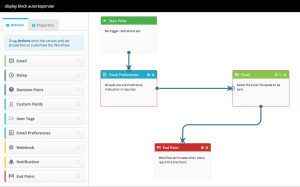
Many b2b marketers still perceive social media and social marketing as purely the domain of consumer marketing programmes and dismiss them as (probably) an ineffective business communications channel.
And this is interesting, because in the b2b space, prospects and customers may be up to 57% of the way through their purchase decision process 1 before ever contacting your sales team. So where does that leave you?
Reaching out further, faster
This means that while reliance on a well search optimised website with skilful on-page key phrase placement is good practice and will certainly provide visibility, a huge inbound volume opportunity is being overlooked.
Let’s look at some hard statistics:
40% of B2B buyers say LinkedIn is important in researching technologies and services for purchase; 19% say the same for Twitter 2
45% of B2B marketers have gained customers through LinkedIn 3
43% of B2B companies acquired customers from Facebook 4
Don’t wait to be found
What social marketing will do is start creating awareness of your enterprises’ products or services long before these prospects and customers visit your website. Why? Because through the use of social media, you have reached out to them, rather than waiting for them to find you.
And this is where many B2B marketers lose the plot. There is for some reason, a perception that any social media presence must be light-hearted and fun. Well, it can be; but it really doesn’t have to be; and your social media presence can be as business-like as you wish.
Creating relevant messaging
 B2B social marketing doesn’t have to have offers; gimmicks or funny cat videos – it just needs to guide prospects and customers – through the delivery of relevant messaging – to your website or marketing automation (MA) system.
B2B social marketing doesn’t have to have offers; gimmicks or funny cat videos – it just needs to guide prospects and customers – through the delivery of relevant messaging – to your website or marketing automation (MA) system.
If you believe social media and social marketing requires a different communications strategy to web content, then you’re right. The difference with social is the narrative is constantly moving forward, so needs to be treated a bit like storytelling.
That is to say, in social, your story is being revealed piece by piece in a blog or post – revealing one fact at a time – and, therefore, requires careful strategic planning. The trick is, using that one fact approach to point readers to web content that builds out that message.
Planning makes perfect
To extend your reach, and reach out to potential customers beyond your competitors and before they even find you, sound planning and the development of a solid communications strategy is essential. And this strategy has to fully align will your marketing plan.
Because using social channels – whichever they may be – will require you to roll out an engaging, regular and episodic story – single fact, by single fact, that aligns with your communications strategy and may run over many weeks or months.
 Feeding the funnel
Feeding the funnel
This regular, episodic storytelling guides prospects to your website where marketing content takes up and embellishes the story, guiding the visitor along their sales journey and towards the sales funnel and a transaction.
In B2B marketing where high-value transactions are common, the sales journey is often a long one, as decision-making takes place, with many divergences and digressions as B2B procurement teams and other decision-makers would expect.
Using social media, you will have got to B2B prospects earlier than most not using these channels, and if you are using an MA system, no matter how basic, you’ll be able to interact with these prospects in exactly the way they would anticipate ahead of a transaction.
So, maybe social marketing is much more appropriate to B2B marketing than it might look to the uninitiated first-timer.
1 CEB best practice insight and technology
2 Social Media Today
3 Social Media Today
4 HubSpot: State of Inbound Marketing
This post was originally published on the Novacom blog.
Digital & Social Articles on Business 2 Community(153)






